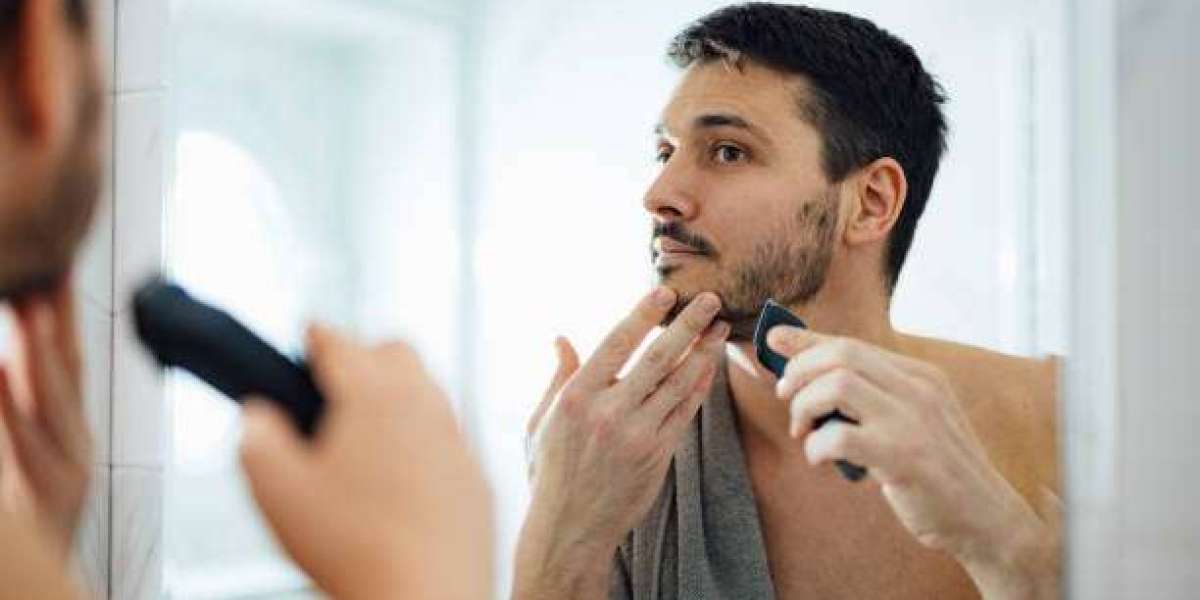Are Electric Shavers More Hygienic?
When it comes to grooming, most people want a shave that’s not only smooth and fast but also clean and hygienic. This is where the debate often begins: Are electric shavers more hygienic than manual razors?
Electric shavers are everywhere—from high-end grooming kits to basic bathroom drawers. They’re convenient, easy to use, and often gentler on the skin. But are they actually cleaner and safer for your skin than traditional razors?
Let’s break down what hygiene really means in shaving, and whether electric shavers live up to the hype.
What Does "Hygienic" Mean in Shaving?
Before comparing tools, we need to understand what "hygienic" actually means in this context. A hygienic shaving routine helps you:
Avoid bacterial infections
Prevent skin irritation and razor bumps
Reduce the risk of nicks and cuts
Maintain clean tools free from debris or buildup
So when we ask if electric shavers are more hygienic, we’re really asking: do they keep your skin safer and cleaner compared to other options?
How Electric Shavers Work
Electric shavers come in two main types:
Foil shavers – Use oscillating blades under a thin metal foil to cut hair close to the skin.
Rotary shavers – Use spinning blades behind circular heads, great for curved areas.
Unlike manual razors, electric shavers don't typically cut directly at the surface of the skin. This means less contact with your skin and a reduced chance of cuts or irritation.
Are Electric Shavers More Hygienic? The Pros
✅ 1. Less Risk of Cuts and Nicks
Manual razors can cause small cuts, especially if the blade is dull or used too quickly. Cuts allow bacteria to enter the skin, which increases the risk of infection or razor bumps.
Electric shavers are designed to minimize direct contact with the skin, which drastically lowers the risk of cuts. That alone makes them more hygienic for many users.
✅ 2. Dry Shaving = Less Bacterial Growth
Electric shavers often don’t require water, shaving cream, or gel. That’s good news for hygiene, because wet environments are breeding grounds for bacteria.
By shaving dry, you:
Avoid contaminated razors left in showers
Reduce skin exposure to bacteria-laden moisture
Keep your shaving process more controlled and cleaner
✅ 3. Easy to Clean (If Maintained Right)
Most modern electric shavers are easy to clean with water or a brush. Some models even have self-cleaning stations that sanitize the blades after every use.
This can be a big plus over manual razors, which often get gunked up with hair, shaving cream, and dead skin.
✅ 4. No Need to Share
Electric shavers are personal grooming tools—you're less likely to borrow or share one, unlike manual razors in shared bathrooms. Less sharing = lower risk of skin infections, especially from bacteria or even viruses.
✅ 5. Reduces Ingrown Hairs
Because electric shavers don’t cut as close to the skin, there’s less chance that hairs will curl back under and cause painful ingrown hairs or razor bumps. This is especially helpful for people with curly or coarse hair.
Fewer bumps and inflammation = cleaner, smoother skin.
The Hygiene Downsides of Electric Shavers
Electric shavers have a lot of hygiene advantages, but they’re not perfect. Here are some areas to watch out for:
❌ 1. Bacteria Can Still Build Up
Like any grooming tool, electric shavers can collect:
Dead skin
Hair clippings
Oil from your skin
Bacteria from previous uses
If you don’t clean your shaver regularly, it can quickly become unsanitary.
❌ 2. Harder to Sterilize Than Disposable Razors
Disposable razors can be tossed after a few uses. That means you're always using a clean, sharp blade.
Electric shavers, on the other hand, are used repeatedly. If you don’t clean or replace the blades regularly, they can harbor bacteria over time.
❌ 3. Some Models Are Tricky to Clean
Not all electric shavers are waterproof or washable. Cheaper models may lack easy access to the blades, making thorough cleaning difficult. If a shaver can’t be easily rinsed or wiped down, it may become less hygienic with each use.
❌ 4. Doesn’t Shave As Closely
This might not sound like a hygiene issue at first, but not getting a close shave could leave some hairs behind—potentially trapping oil and debris. This can clog pores or cause irritation for some people, especially if the skin isn’t exfoliated.
How to Keep Electric Shavers Hygienic
The tool is only as clean as how you use and maintain it. Follow these tips to keep your electric shaver safe and hygienic:
✅ Clean After Every Use
Use the brush provided or rinse under warm water (if waterproof). Some models also include disinfectant sprays.
✅ Disinfect Weekly
Use a blade disinfectant or rubbing alcohol to kill bacteria. Let it air dry before putting it away.
✅ Replace Blades as Recommended
Blades and foil can wear out over time. Most manufacturers recommend replacing them every 12–18 months (or sooner if you notice dullness).
✅ Don’t Share Your Shaver
Sharing spreads bacteria, skin flakes, and oils—even if you clean the device. Keep it personal.
✅ Store It in a Dry Place
Avoid humid bathrooms. Moisture helps bacteria grow. Store your shaver in a dry, ventilated spot.
Manual Razors vs. Electric Shavers: Hygiene Face-Off
Here’s a quick comparison:
| Feature | Electric Shaver | Manual Razor |
|---|---|---|
| Risk of Cuts | Low | High |
| Risk of Infection | Lower (with care) | Higher |
| Cleaning Required | Regular (deep) | Frequent |
| Sharing Risk | Low | Higher |
| Wet Shave Needed | No (usually) | Yes |
| Blade Replacement | 12–18 months | Every few uses |
Who Should Consider Electric Shavers for Hygiene?
Electric shavers can be a more hygienic option for:
People with sensitive skin
Those prone to razor bumps or ingrown hairs
Busy users who prefer dry shaving
Anyone who struggles with frequent nicks
Those living in shared spaces or dorms
That said, manual razors still have their place—especially if you want a close shave or have a specific shaving routine that works for your skin.
Final Verdict: Are Electric Shavers More Hygienic?
Yes—if used and maintained properly.
Electric shavers offer many hygiene benefits: fewer cuts, reduced risk of infection, less moisture, and easier cleaning (especially with newer models). But they still require regular care, cleaning, and blade replacement to stay safe and effective.
So if hygiene is your top priority, and you're willing to keep your device clean, an electric shaver might just be your new best grooming buddy.
Summary: Keep It Clean
Electric shavers can be more hygienic, especially for sensitive skin.
Proper cleaning and storage are key to maintaining hygiene.
Avoid sharing, clean your shaver after each use, and replace blades regularly.
Whether electric or manual, your grooming tool should always be clean, sharp, and safe.
- And if you’re hungry for deeper insights into self-care, mindfulness, and personal growth, visit venzec.icu for a wealth of resources tailored to help you thrive.



